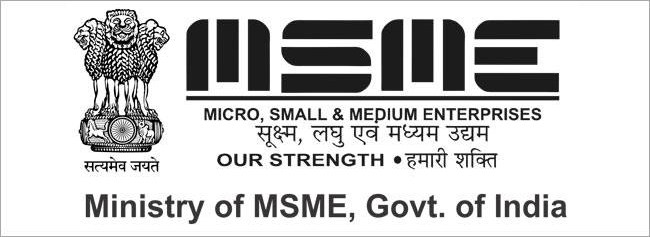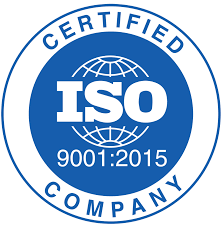RISK BASED INSPECTION RBI
CHAPTER II
Definitions and Acronyms in RISK BASED INSPECTION
Consequence
- Consequence: Outcome from an event. There may be one or more consequences from an event. Consequences may range from positive to negative. However, consequences are always negative for safety aspects. Consequences may be expressed qualitatively or quantitatively.
Damage Tolerance and Deterioration
- Damage Tolerance: The amount of deterioration that a component can withstand without failing.
- Deterioration: The reduction in the ability of a component to provide its intended purpose of containment of fluids. This is caused by various deterioration mechanisms (e.g. thinning, cracking, mechanical). Damage or degradation may be used in place of deterioration.
Event and Event Tree in risk based inspection
- Event: Occurrence of a particular set of circumstances. The event may be certain or uncertain. The event may be singular or multiple. The probability associated with the event is estimated for a given period of time.
- Event Tree: A tool that organizes potential accidents in a logical manner. The event tree begins with identification of potential initiating events. Subsequent possible resulting events are then displayed as the second level of the event tree. This process is continued to develop pathways or scenarios from the initiating events to potential outcomes.
External Event
- External Event: External events are usually beyond the direct or indirect control of persons employed at or by the facility. Events resulting from forces of nature, acts of Allah or sabotage, or neighboring events fires or explosions, hazardous releases, electrical power failures, climatic catastrophes, earthquakes, and intrusions.
Failure and Failure Mode
- Failure: Termination of the ability of a system, structure, or component to perform its required function of containment of fluid (i.e. loss of containment). Failures may be unannounced and undetected until the next inspection (unannounced failure), or they may be announced and detected by any number of methods at the instance of occurrence (announced failure).
- Failure Mode: The manner of failure. For Risk Based Inspection, the failure of concern is loss of containment of pressurized equipment items. Examples of failure modes are small hole, crack, and rupture.
Source and Hazard in risk based inspection
- Source: Thing or activity with a potential for consequence. Source in a safety context is a hazard.
- Hazard: A physical condition or a release of a hazardous material that could result from component failure and result in human injury or death, loss or damage, or environmental degradation. Hazard is the source of harm. Components that are used to transport, store, or process a hazardous material are a source of hazard. Human error and external events can also create a hazard.
Hazard and Operability Study
- Hazard and Operability (HAZOP) Study: A form of failure modes and effects analysis, which uses systematic techniques to identify hazards and operability issues.
- Identifying unforeseen design, process, or operational hazards.
- The basic objectives are:
- To produce a full description of the facility or process, including the intended design conditions.
- To systematically review every part to discover how deviations from the intention of the design can occur.
- To decide whether deviations can lead to hazards or operability issues.
- To assess effectiveness of safeguards.
Likelihood and Probability
- Likelihood: Probability.
- Probability: Extent to which an event is likely to occur within a time frame. Probability is “a real number from 0 to 1 attached to a random event”. Probability is related to long-run relative frequency or degree of belief in an occurrence. Frequency rather than probability is used. Degrees of belief is chosen as classes or ranks.
- “Rare/unlikely/moderate/likely/almost certain” or “incredible/improbable/remote/ occasional/probable/frequent”.
Qualitative Risk Analysis in risk based inspection
- Qualitative Risk Analysis (Assessment): Method that uses engineering judgment and experience as the basis for analysis of probabilities and consequences of failure.
- Results of qualitative risk analyses are dependent on the background and expertise of the analysts and the objectives of the analysis.
- Failure Modes, Effects, and Criticality Analysis (FMECA) and HAZOPs are examples of qualitative risk analysis techniques that become quantitative risk analysis methods when consequence and failure probability values are estimated along with the respective descriptive input.
- Identifies and delineates the combinations of events that, if they occur, will lead to a severe accident (e.g. major explosion) or any other undesired event.
- Estimates the frequency of occurrence for each combination.
- Estimates the consequences.
- Quantitative risk analysis integrates into a uniform methodology the relevant information about design, operating practices and history, reliability, human actions, physical progression of accidents, and potential health and environmental effects, as realistically as possible.
Risk
Relative, Absolute, and Residual
- Risk: Combination of probability of an event and its consequence. In some cases, risk is a deviation from the expected. When probability and consequence are expressed numerically, risk is the product.
- Relative Risk: The comparative risk of a facility, process unit, system, or equipment to other facilities, process units, systems, or equipment, respectively.
- Absolute Risk: An ideal description of quantification risk.
- Residual Risk: The risk remaining after mitigation.
Risk
Analysis, Assessment, and Acceptance
- Risk Analysis: Systematic use of information to identify sources and to estimate the risk
- Risk analysis provides a basis for risk evaluation and risk acceptance. Information can include historical data, analysis, informed opinions and concerns of stakeholders.
- Risk Assessment: Overall process of risk analysis and risk evaluation.
- Risk Acceptance: A decision to accept a risk. Risk acceptance depends on risk criteria.
Risk
Criteria and Identification
- Risk Criteria: Terms of reference by which the significance of risk is assessed. Risk criteria may include associated cost and benefits, legal and statutory requirements, socio-economic and environmental aspects, concerns of stakeholders, priorities and other inputs to the assessment.
- Risk Identification: Process to find, list, and characterize elements of risk. Elements may include; source, event, consequence, probability. Risk identification may also identify stakeholder concerns.
Risk
Estimation and Evaluation
- Risk Estimation: Process used to assign values to the probability and consequence of a risk. Risk estimation may consider cost, benefits, stakeholder concerns and other variables, as appropriate for risk evaluation.
- Risk Evaluation: Process used to compare the estimated risk against given risk criteria to determine the significance of the risk. Risk evaluation may be used to assist in the acceptance or treatment decision.
Mitigation
- Mitigation: Limitation of any negative consequence or reduction in probability of a particular event.



